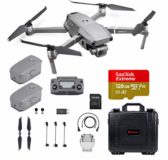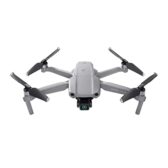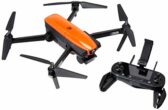The Best Drones with Obstacle Avoidance Functionality in 2021
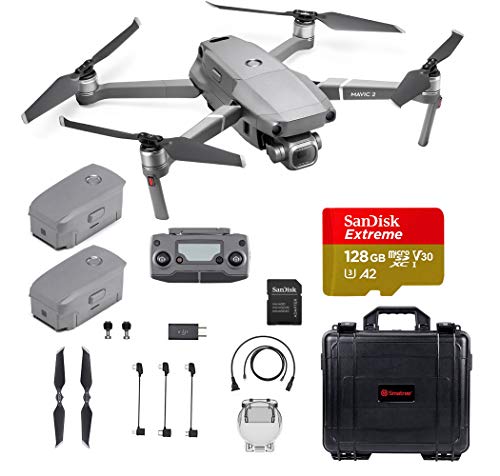
DJI Mavic 2 Pro
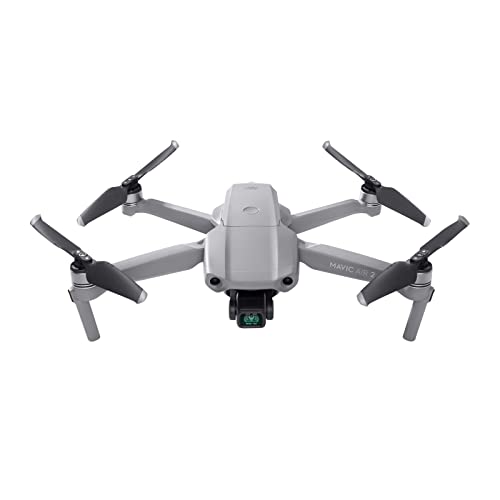
DJI Mavic Air 2
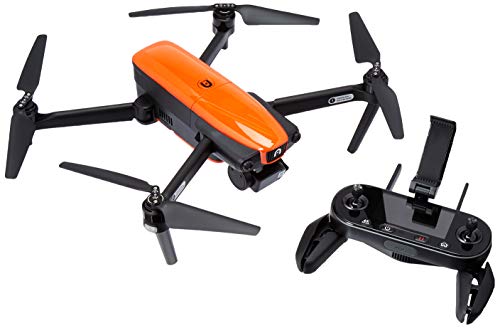
Autel Robotics EVO
One of the more innovative and impressive features drones now possess is obstacle avoidance.
Like smart little flyers, they can automatically detect and avoid obstacles in front of them, protecting themselves and others in the process. It all happens so instantly that we often don’t stop to think about the fantastic technology that happens behind the scenes.
So today, we’re going to take a more in-depth look. We’ll explore what obstacle avoidance is and how it actually works. Then we’ll unveil some of the best drones in the market that use this feature.
What is Obstacle Avoidance?
Obstacle Avoidance is a safety feature that’s equipped in some advanced drones. In a nutshell, it allows the UAV to detect any obstacle along its path. Once it does, it will then react automatically to avoid the obstruction.
The main reason to have obstacle avoidance is to prevent the drone from crashing, either through pilot error or when engaged in autonomous flight.
Different drones will have various behaviors whenever they encounter an obstacle. The simplest is for the drone not to do anything at all. It will only let the pilot know there’s an obstacle, and it’s up to that person to steer the drone away.
Some drones will stop and hover in place, which will then wait for further instructions from the pilot. Others will introduce a simple avoidance maneuver to prevent a crash. This is achieved by merely flying up or sideways until the path forward is clear.
The most advanced drones will have pathfinding algorithms that will calculate the best route to take to help avoid any obstacle. This is done in real-time and represents one of the most robust avoidance systems in today’s drones.
It’s important to note that obstacle avoidance is not a complete replacement for a pilot’s skill. At least, not with current technology. A human’s judgment is still needed to ensure a drone’s safe flight.
The Best Obstacle Avoidance Drones
We may receive compensation on qualifying purchases via our links. This does not change how we review items. For more information, please read our affiliate disclosure.
The DJI Mavic 2 series lays claim to having one of the most advanced obstacle avoidance systems on the planet.

- Flight Time: 30 minutes
- Range: 7 kilometers
- Camera: 4K resolution at 30 fps; 20 MP stills
- Weight: 1.64 pounds
- Gimbal: 3 Axis
The system used in the Mavic 2 is known as Omnidirectional Directional Sensing technology. It’s one of the first and rare drones that can detect collisions in every direction.
This is achieved by a combination of Vision and Infrared sensors located throughout the Mavic 2.
You have pairs of sensors located in the front, back, and underside of the drone. Additional infrared sensors are also located on the sides and top of the Mavic 2.
Let’s start with the forward vision, which can detect obstacles up to 20 meters away. This works even if the Mavic 2 is flying in fast, up to 50 km/h. The backward vision works in the same way but at a shorter 16 meters.
Both of these forward and backward sensors are what’s powering the Mavic 2’s Advanced Pilot Assistance System (APAS). It will continuously plan a flight path while you’re flying the drone, which allows it to avoid any obstacles in your way automatically. The great thing is that it works for both forwards and backward flight.
As for the side sensors, these are used whenever you’re engaged in any of the Mavic 2’s autonomous flight modes like ActiveTrack. The upward sensor isn’t as accurate, but it shouldn’t matter as there shouldn’t be many collisions from the top provided you fly your drone correctly.
The bottom sensors also work great at detecting obstacles but are there more as a landing assistant. It can detect the ground up to 50 meters away and allows the Mavic 2 to land safely. It also has Auxiliary Lights, so it can work even in low light conditions.
As great as the Mavic 2’s obstacle avoidance is, it does have its limitations. It will generally be spotty in low light conditions, as well when faced with reflective surfaces.
Nevertheless, it’s still one of the best avoidance systems of any drone on the planet. This is on top of the already amazing specs of the DJI Mavic 2 – including its fantastic battery life and range, plus the fantastic camera.
+ Pros
The Mavic Air 2 is a groundbreaking development in the mid-budget range. Almost no other drone compares for the price.

- Flight Time: 34 minutes
- Weight: 1.3lbs / 0.59kg
- Camera: 48MP with 4K/60FPS video
- Range: 10km / 6.2 miles
The DJI Mavic Air 2‘s quality isn’t much of a surprise to anyone that knows the drone space — we’ve been blown away with what this machine is capable of considering it falls way below the $1,000 price tag that is usually required for such a premium product.
Its 34 minutes of flight time is staggering given its size and price, making it one of the biggest battery life drones you’ll find.
The Mavic Air 2 has obstacle detection in three different directions and intelligent tracking, along with DJI’s ActiveTrack technology, to also make this one of the best bang-for-the-buck follow me drones that there are.
With a 48MP 1/2-inch CMOS sensor camera and 4K video supported by a 3-axis gimbal, this is a brilliant option for anyone looking to take premium quality photos and videos without having to spend an arm and a leg.
+ Pros
- Cons
The Autel EVO is rugged, withstanding stronger winds and even the occasional drizzle of rain.

- Flight Time: ~30 minutes
- Charge Time: ~210 minutes
- Range: 7050m / 4.4 miles
- Remote Controller: WiFi 2.4GHz (included in the set)
- Camera: 3-axis gimbal 4K 60fps camera with 12MP
- Live Video Transmission Range: 7000m / 4.3 miles
- Weight: 863g / 1.9lbs
- Carry Capacity: N/A
- Working Temperature: 0°C ~ 40°C
- Rated for outdoor use
Not to be outdone by DJI, the drone juggernaut’s biggest rival, Autel Robotics, also came up with their own obstacle avoiding drone in the form of the EVO.
The EVO is indeed one of the few drones that’s out to play head-on with the likes of the Mavic 2. It has the same long flight time (30 minutes), a pretty impressive range (7 km), and autonomous flight modes as the DJI version.
But what it has going on for it is its ruggedness. It’s a weather-resistant powerhouse.
Even with its sturdiness, however, it still has a robust Obstacle Avoidance System that further acts as an insurance policy against collisions.
The EVO has obstacle detection sensors on its front and back, as well as on its underside. Unfortunately, it doesn’t have any along its sides, leaving it particularly vulnerable to those areas.
What makes the EVO’s collision avoidance system particularly powerful is that it doesn’t just rely on infrared sensors. It actually uses cameras to “see” the environment.
The front sensors of the EVO are composed of two binocular-vision cameras, which creates a 3D mapping of its surroundings. It then continually calculates an optimal flight path while it operates, looking for the best way to avoid obstacles.
The bottom sensors of the EVO are even more robust, with a pair of sonic sensors and a pair of vision cameras. Not only do they make a landing on uneven surfaces safe, but the cameras also capture reference footage of the landing ground. Then, when you initiate the EVO’s Return to Home feature, it will know precisely where to land with fantastic accuracy.
The rear protection of the EVO isn’t as sophisticated, with just a single infrared sensor to help detect obstacles.
The same vision cameras used in obstacle avoidance also powers its visual recognition technology, Dynamic Track. It’s a pretty accurate way to have the drone follow you around.
While the Autel EVO lacks obstacle avoidance in all directions, it’s still a pretty incredible piece of tech.
+ Pros
- Cons
No products found.
This is a children’s drone that gives you many innovative ways to control it. One of the most exciting its hand control feature.
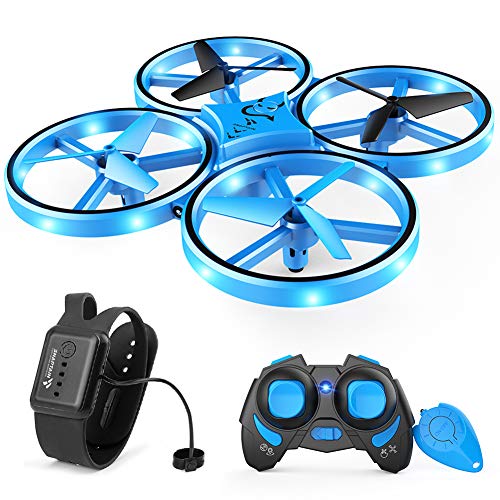
- Flight Time: 8 minutes
- Range: 50m
- Weight: 72g
It may come as a surprise to know that obstacle avoidance technology isn’t solely reserved for advanced drones. Now, even toy drones can have them.
Just take a look at the Snaptain SP300.
You can use your hands to “push” and “bounce around” the SP300 and make it fly in a particular direction, without actually touching it. You can also launch it by hand, simply by tossing it in the air.
This is made possible by the infrared sensors equipped on the drone, which is technically a form of obstacle avoidance. It’s merely steering clear of your hand, which the SP300 considers an obstruction.
The feature makes the SP300 one of the safest toy drones for children. It works so well, actually, that you’ll be hard-pressed to catch the drone with your hand since it’s always zooming away from you.
So how do you get it to stop? Well, it also has a mini controller, which will land and launch the SP300 with the push of a button. You can also choose to use the physical joystick controller to maneuver it the traditional way, perfect for experienced pilots.
Then you have the equally innovative G-Sensor hand controller. It’s a device that attaches to your wrist and your index finger. You then make hand and finger gestures to fly the SP300 drone around as a Jedi would. It’s something that you need to experience to get a sense of.
Apart from these flight options, you get a basic yet durable drone with LED lights and the ability to do 3D stunts. With 8 minutes of flight time, it’s pretty average at best.
But the Snaptain SP300 shows that obstacle avoidance technology is actually a great addition to make toy drones that much safer.
No products found.
No products found.
This drone is certainly packed to the brim with exciting technology, including obstacle avoidance.
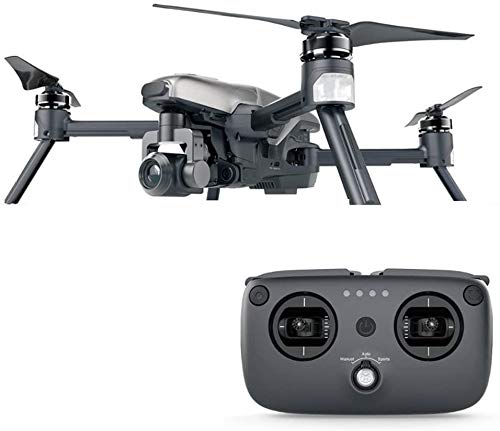
- Flight Time: 28 minutes
- Camera Resolution: 4K UHD
- Sensor Size: 1/2.3 inch CMOS
- Frame Rate: 30 fps and 60 fps
- Gimbal: 3-axis with 90-degree adjustable angle
- Weight: 890g
The Walkera Vitus 320 is a powerful, high-end photography drone from a manufacturer that’s most known for its racing drones.
The camera used by this drone is a beefy 12-megapixel camera that has a 1/2.3 inch CMOS sensor and can capture video up to 4K HD resolution. It’s plenty powerful and produces stunning images at par with the best camera drones out there. The 3-axis gimbal also helps stabilizes footage shot using the Vitus 320.
Another great feature of the Vitus 320 is its slew of flight features, specifically its Obstacle Avoidance System. The drone can detect obstacles in three directions – front plus its two sides. Sadly, its rear is left unprotected, but it shouldn’t matter as long as you don’t fly backward.
The Vitus 320 uses a combination of traditional Infrared sensors with high-precision Time of Flight sensors. This allows it to generate a 3D depth map of its surroundings quickly, even it’s flying at high speeds.
The result is that the Vitus 320 can detect obstacles at up to 5 meters away mid-flight. When it does, it will gradually slow down to prevent a sudden impact with the obstruction.
Apart from these sensors, the drone also has infrared and optical flow sensors on its underside. By taking images rapidly, it can use that information to hover precisely in place, even without a GPS signal. This enables the Vitus 320 to maintain its position indoors.
Another standout feature of the Vitus 320 includes its Follow Me feature, which uses its own visual recognition tech to track subjects. This autonomous flight mode is complemented excellently by its obstacle avoidance system.
Overall, the Walkera Vitus 320 is a smart and able photography drone. The robust obstacle avoidance system makes it even safer to fly and take photos with.
+ Pros
- Cons
No products found.
The Force1 Scoot is one of the cheapest drones ever to have obstacle avoidance. In fact, that’s almost all it has to depend on.
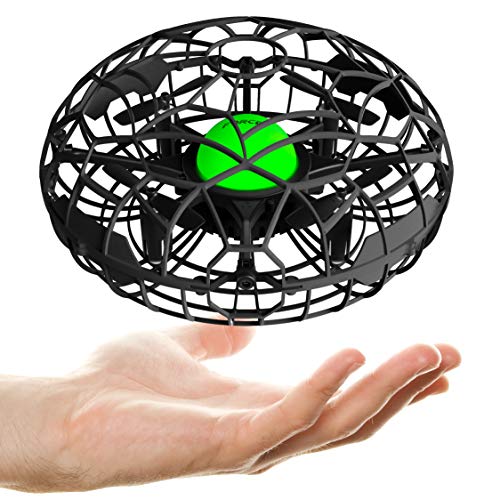
- Flight Time: 6 minutes
- Range: N/A
- Obstacle Avoidance Sensors: infrared
The Scoot literally relies on obstacle avoidance in order to fly.
This is because the Scoot is entirely operated by hand. Yup, there’s no joystick controllers, save for a 1-Key Remote Controller to launch and land the drone with one button. But even that is unnecessary to fly this drone properly.
How it works is pretty simple. The Scoot is equipped with 360-degree infrared sensors around its body, which allows it to sense any obstacles in all directions. Whenever the drone detects an obstruction, it will automatically fly in the opposite direction.
So, to direct the Scoot, simply “push” it with your palm. But before you can do, the obstacle sensors will kick in and make it fly away from you. In essence, it’s like bouncing the drone around without touching it. It’s actually fun to play drone “ping pong” with the Scoot!
This makes the Scoot one of the safest drones you can have your kids play. It will take an effort on your part to actually make the drone crash. Even if it does, a flexible outer cage protects it that can absorb the impact, so the internal components are safe from damage.
The drone has a shorter 6 minute flight time, which is a shame since it’s so fun to use. It’s rechargeable via USB, so no spare batteries here, sorry.
But hey, this drone is cheap enough that you can buy quite a few of them, so you can extend your fun times.
The Force1 Scoot is one drone that gives a new way to utilize obstacle avoidance technology. Who knew a safety feature could be so enjoyable?
The DJI Mavic Air is an advanced smart drone that’s hiding in a small, compact frame.
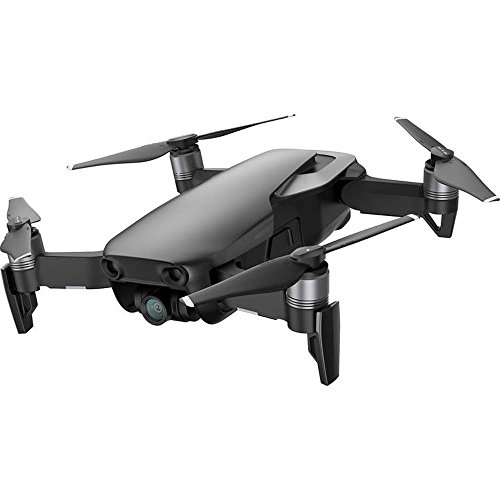
- Follow Me Method: visual recognition using DJI ActiveTrack
- Flight Time: 21 minutes
- Camera: 4K video at 30 fps, with support for 32 MB panoramas and HDR photos
- Weight: 15.16 ounces
The Mavic Air is one of DJI’s more compact consumer drones. It takes the power of the Mavic Pro and combines it with the smaller frame of the Spark to produce something along the middle.
Indeed, it inherits some of the more fantastic tech of others in the Mavic series. One of them happened to be the obstacle avoidance system.
The Mavic Air uses a 3-Directional Environment Sensing system that can detect obstacles in its front and back, as well as on its underside. This is part of the drone’s bigger FlightAutonomy 2.0 system, which controls its smart flight capabilities through a collection of sensors and algorithms.
The way the system works is similar to how it is with the Mavic 2. It uses Visual Intertial Odometry tech to detect the drone’s surroundings via visual camera information and inertial sensors. The data is then sent to powerful internal processors.
In other words, it gives the Mavic Air an accurate picture of where it is going. It can do this even when the drone is flying up to 8 m/s, and can detect obstacles 20 meters away.
When it does sense an obstruction, then the Advanced Pilot Assistance System (APAS) kicks in. It will attempt to create and execute a flight path to avoid the obstacle automatically.
When you’re manually flying the Mavic Air, this works exceptionally well. It’s like the drone has a life of its own. In case it can’t calculate a safe path (for example, if it encounters a large wall), then it will just hover in place.
Aside from its front and rear sensors, it’s also equipped with a downwards sensor. This acts more as a stabilization feature, which allows the Mavic Air to hold its position even without a GPS signal.
The Mavic Air’s obstacle avoidance system is the perfect safety net for the many autonomous flight modes this drone has. These include the visual tracking mode ActiveTrack and TapFly.
+ Pros
- Cons
Do You Need Obstacle Avoidance?
The easy answer to this is that yes, pretty much, if only it were more widely available. Unfortunately, it’s not, so you need to consider if it’s worth going for the more expensive drone just to get this feature.
Arguably, one of the best uses for obstacle avoidance is when doing autonomous flight modes. When you let the drone fly off on its own a lot in different locations, then it’s necessary to get a collision detecting drone.
Obstacle avoidance is also useful if you plan to fly your drone in dense environments. Examples include thick forests, narrow alleyways, and busy streets. Crashes are more prone in these areas, so the extra insurance collision avoidance gives might be worth it.
If you’re using your drone for commercial purposes, then obstacle avoidance is also welcome. You want the best protection on your investment, plus crashes will halt and delay your operations.
Otherwise, if you just plan to fly your drone around, then obstacle avoidance might not be necessary.
How Does Obstacle Avoidance Work?
Obstacle avoidance is a complex, multi-step process that involves coordination between the drone’s hardware sensors and software algorithms. It’s incredible, really, to realize that there’s so much stuff happening behind something that’s seemingly instantaneous.
Any obstacle avoidance system starts with the sensors. They allow your drone to get a sense of its environment, and determine if there are any obstacles nearby.
There are several types of sensors, each employing different kinds of technologies. Rather than rely on one, however, most drones will use multiple sensor types together to gather various types of data. When combined this way, they can create a much more accurate picture of a drone’s surroundings than just using one sensor alone.
Here are some of the common types of sensors used in consumer drones:
Infrared Sensors
Infrared (IR) sensors are some of the simplest types, and feature in cheaper obstacle avoidance drones. It consists of an infrared transmitter, which continuously sends out a ray of infrared light. This type of light is used so that normal visible light doesn’t interfere with it.
Usually, when the path is clear, the infrared ray simply continues on until it weakens and disappears. But if it encounters an obstacle, the infrared ray will then bounce off that and reflect back to the IR sensor.
The sensor also has an infrared receiver, which receives the reflected IR ray. It can then determine that there’s an obstacle in front of the drone, and can even tell how far it is.
IR sensors are inexpensive to produce and therefore are common in budget toy drones. However, on their own, they’re not that accurate. That’s why in more advanced drones, they are used as auxiliary sensors in conjunction with much more sophisticated instruments.
Ultrasonic Sensors
Ultrasonic sensors use sound waves instead of rays of light to detect any obstacle. The principle is the same as that used by sonar and bats to navigate.
It consists of two parts – an ultrasonic transmitter and receiver. The receiver acts like a speaker that emits a high-frequency pulse out into the environment. When these sound waves hit an obstacle, it gets reflected back to the sensor’s ultrasonic receiver, which is just like a microphone.
The length of time between the sound waves being emitted and received tells the sensor how far away that object is. The longer the delay, the farther off the object is. This, in turn, helps the drone know if there are any obstacles nearby.
Ultrasonic sensors are commonly used in the drone’s underside to help it land safely on uneven surfaces. The “obstacle,” in this case, is the landing ground.
Stereo Vision Sensors
Stereo vision sensors are used to help create a 3D representation of the drone’s surroundings.
The system uses two cameras spaced apart like how a human’s eyes are, to capture a stereoscopic 3D image. This is so that it can mimic the way our eyes can determine depth in what we see.
The two different viewpoints offered by the two cameras can then be used to determine the image’s 3D space through triangulation, pixel by pixel. It results in thousands of 3D data points to help recreate the scene, including any obstacles involved.
Stereo vision sensors are a more advanced sensing technology, and paints a much comprehensive picture of the drone’s environment, leading to more accurate results. It’s the primary sensing technology used by DJI.
Time of Flight Sensors
Time-of-Flight sensors create a depth map of the drone’s surroundings by using a combination of sensors and light sources. It works just like ultrasonic sensors but uses light instead of sound waves.
First, the sensor system sends out a pulse of light that serves to illuminate the entire scene in front of the drone. It then waits for each ray of light to hit an object, which reflects it back to the sensor.
The “time of flight” of each light ray is then measured, which is used to create a 3D depth map of the drone’s surroundings, with intensity information based on an object’s distance. Through this information, the drone would then know if there’s an obstacle in front of it, and how far.
Flight of Time sensors are one of the fastest methods to generate a 3D image, which makes them well suited for drones. They’re also capable of detecting obstacles in the broader area around the drone.
Obstacle Avoidance Algorithms
Once the sensors have captured the data, it’s then sent to the drone’s flight controllers for processing. Until this point, all of the information obtained by the sensors is just raw data. Obstacle avoidance algorithms are needed to determine what the drone will do in response to this data.
An obstacle avoidance algorithm is like a set of rules that a drone follows to determine if there’s an obstacle in front of it, and what it will do in response. Most algorithms will work with the data in front of them, while others will compare it with previously stored data.
Your drone’s algorithm is what separates a weak obstacle avoidance system with an excellent one. After all, accurate data is useless if it’s not used correctly.
The Advantages of Obstacle Avoidance
Obstacle avoidance is primarily a safety feature that we tend to forget about until it kicks in. But there are actually lots of other hidden benefits that this technology gives
It protects the drone from crashes
The most obvious advantage is that it keeps your drone safe. Most of the drones that have this feature are usually advanced models, packed with lots of complicated technology. Of course, this also makes them very expensive.
In these drones, obstacle avoidance is almost a necessity. While it will not completely replace a pilot’s skill, it’s still an added insurance against crashes. But even when the drone itself is not that costly, it’s always prudent to protect your investment from getting damaged.
It makes flying safer for people around you
Aside from keeping your drone safe, it’s also vital for keeping other people in the vicinity safe from impact. While not fatal, drone collisions can still hurt and lead to injuries. You wouldn’t want to get sued over something that could’ve been easily avoided.
Plus, people are very unpredictable. Even when you’re flying your drone carefully, you never know when someone might pop up and accidentally hit your drone, maybe around a blind corner, perhaps. You can’t always react quickly in these situations.
In these instances, obstacle avoidance technology might save the day
It will save you in expensive repair costs
Drones are expensive machines, with a lot of internal parts. And a lot of them aren’t even easily replaceable. This can make repairing them extremely costly, so much so that replacing them is often the more economical route.
Obstacle avoidance technology might be much more expensive, but it will help you save more money in the long run.
It helps the drone fly safely in autonomous mode
One of the best applications of obstacle avoidance technology is when you’re operating your drone autonomously. Strides in technology have made automatic flight a reality. Now drones can smartly follow you around or fly through a predetermined flight path, all without you having to control it manually.
However, there’s a risk here. These “smart” flight modes aren’t smart enough to detect and avoid obstacles on their own. And since you’re usually hands-off the controller during auto flight, you won’t be able to steer the drone clear of any danger.
The result? Crash.
That’s why obstacle avoidance is a must if you plan to use auto flight modes, especially in dense areas like forests or alleys. They would be able to protect your drone from accidental crashes, so you can better focus on your task and truly leave the drone to its own devices.
It helps drones fly indoors better
A house is literally like an obstacle course for drones. There are many things that it can collide with – chairs, furniture, the TV, your dog – that can make indoor flying that much riskier to your drone.
This is compounded by the fact that there might not be enough GPS signals indoors to make the drone position itself. Remember that some drones use GPS/GLONASS to maintain their stability.
If they lose stability, flying them indoors will be much more challenging. Hence, higher chances of crashing.
Obstacle avoidance technology will make it that much safer for you and your drone. You’ll be comforted by the fact that you don’t need to have ninja pilot skills to steer your drone indoors safely.
It helps your drone to land better
Most drones that have obstacle avoidance systems will be equipped with sensors in the front, back and to the sides. But quite a number of them will also have sensors on the underside as well.
Apart from helping you detect obstacles from below, their primary use is actually to help your drone land better in uneven surfaces. This is actually a significant risk since your drone can topple over and get damaged during landing.
Infrared sensors help by detecting the ground and slowing down as it approaches, for a much softer landing. After all, the ground is just like any other obstacle.
Some even use vision cameras to take photos of the landing site. Later, when the drone is recalled using the Return to Home (RTH) feature, it will use that image as a reference, so it will know precisely where to land.
It’s a great learning tool
It’s a shame that obstacle avoidance technology isn’t that widespread in starter drones since it’s a fantastic training wheel to help newbies fly better.
Obstacle avoidance technology gives beginner pilots an added layer of safety when they’re practicing. This is much like how a driving school car will have brakes on the passenger side, so the instructor can apply brakes if needed.
When you have the knowledge that your drone has a safety net, you’ll be much more confident in flying it. You’ll be much more daring and try maneuvers you usually won’t. And that’s where the learning is.
It can actually be used to fly a drone
Obstacle avoidance is more than just avoiding stuff. One of the more innovative ways you can use it is actually to steer your drone using just your hands.
The way these “hand drones” work is actually pretty simple. Most of them are equipped with infrared sensors that can detect any obstacles. Once they do, they will then fly in the opposite direction, much like how a magnet repels another magnet.
So if you put your palm in front of the drone, it will detect your hand as an obstacle and go in the opposite direction. It’s then a simple matter of “bouncing” the drone around to steer it.
This method of flying is mostly seen in toy drones. It’s great for kids since it’s so intuitive to use. It also makes these toy drones exceptionally safe for children and toddlers to use.

